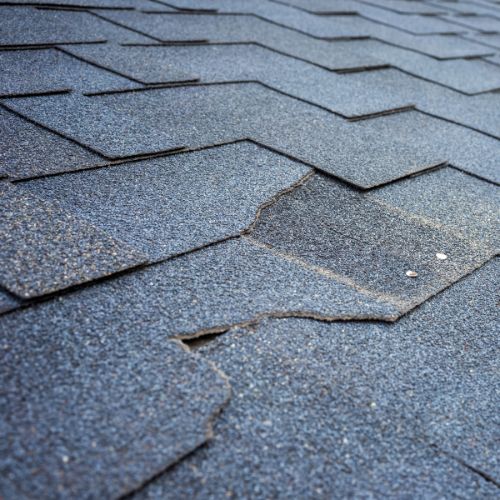Key Factors To Consider for an Effective Roofing System Installation: Achieving Durability and Performance
In embarking on the journey of roofing installment, one have to focus on crucial factors to consider to guarantee both durability and effectiveness. The choice of products, tailored to withstand neighborhood climate problems, plays a crucial duty in maintaining structural integrity. As we explore these aspects, it becomes noticeable that a successful roofing setup is not merely concerning covering a framework but concerning crafting a resilient and lasting option.
Selecting the Right Products

Environment plays a critical role in material selection. In areas prone to heavy rains or snow, materials like asphalt roof shingles or steel roofing with high water resistance are a good idea. Conversely, in hot environments, products with reflective residential or commercial properties, such as amazing roof membrane layers or tiles, can assist lower energy costs by dispersing sunlight.
Budget plan factors to consider also influence product option. While costs products like slate or clay tiles offer durable performance, they feature greater upfront prices. They can verify economical over time due to their minimal upkeep demands and expanded life expectancy.
Finally, the architectural style of the building need to harmonize with the roof covering material. For circumstances, conventional homes might gain from wooden tiles, whereas contemporary structures may choose sleek steel surfaces. By very carefully considering these elements, you can select materials that align with both useful and aesthetic goals.

Comprehending Roof Covering Layout
Comprehending roofing system design is crucial in achieving a well-functioning and aesthetically pleasing framework. The style of a roofing impacts not only the aesthetic allure however also the architectural stability and functionality of the building. An attentively developed roof can boost the general building style while ensuring efficient drain, insulation, and ventilation.
The pitch, or incline, identifies exactly how effectively water and particles are dropped from the roof surface area, impacting the lifespan of roofing materials. Gable roofs are prominent for their simplicity and effective water shedding, while hip roof coverings offer phenomenal stability in high wind areas.
Structural support systems, such as trusses and rafters, are vital in dispersing weight and keeping the roof's honesty. Correct style makes certain that the roofing system can hold up against environmental loads and stand up to deformation. In addition, incorporating attributes like overhangs and eaves can secure the structure's frontage and improve power performance by giving shade and decreasing warmth gain.
Eventually, a well-considered roofing system design equilibriums create, work, and longevity, adding to the lasting success of the installation.
Environment Factors To Consider

In warm and warm climates, roof covering products need to show, as opposed to absorb, solar warmth to preserve energy performance and avoid excessive thermal development, which can lead to material destruction - Keep Dry Roofing St Peters MO. On the other hand, in chillier regions, materials have to offer ample insulation to stop heat loss and stand up to freeze-thaw cycles that can create fracturing and various other architectural problems
Furthermore, the choice of shade and layer can substantially impact a roof's thermal performance, especially in locations with extreme temperature level variations. Regional building regulations commonly use guidance on ideal materials and layouts, showing regional climate concerns. An extensive understanding of climatic conditions is vital for selecting products and layouts that make certain a roof's optimal performance over its lifespan.
Setup Best Practices
Efficient roofing system setup is an important part of guaranteeing long-term sturdiness and efficiency. Adhering to finest practices during installation not only safeguards structural stability yet likewise decreases costly future fixings. First and foremost, picking the appropriate products is extremely important. Making use of high-grade tiles, underlayment, and flashing customized to the details climate and structure layout will certainly enhance the roofing's strength.
Just as essential is the preparation of the roof covering deck. Ensuring that the deck is tidy, dry, and structurally audio before installment stops complications such as leakages and early wear. Correct ventilation is one more crucial consideration, as it alleviates moisture build-up and thermal stress, thus prolonging the roof's lifespan.
Accuracy in measurement and positioning throughout the installment process is vital. official statement This entails exact placement of roof shingles and careful attention to overlapping, which prevents water ingress. Utilizing professional, proficient labor guarantees these requirements are satisfied, minimizing the threat of errors that could jeopardize the roof covering's performance.
Energy Performance Approaches
Enhancing a roofing system's energy efficiency is a calculated factor to consider for lowering energy expenses and environmental effect. By picking appropriate materials and technologies, homeowners and contractors can dramatically improve the thermal performance of a roof, thus reducing power consumption.
Furthermore, the consolidation of adequate insulation is critical in preventing warm transfer between the exterior and interior of a building. Insulation products with high R-values, such as spray foam or rigid foam boards, are reliable in maintaining a constant indoor temperature, thereby maximizing HVAC system efficiency.
Furthermore, the combination of photovoltaic panels on rooftops not only produces sustainable power yet can likewise provide shade, more lowering warmth gain (Keep Dry Roofing St Peters MO). Innovations like great roof coverings, which web link make use of coverings to mirror even more sunshine, are additionally getting popularity for their capability to decrease roofing temperatures
Conclusion
Finally, achieving an wikipedia reference effective roofing system installation demands a thorough approach that incorporates the selection of premium products tailored to details climatic problems, thoughtful layout factors to consider for optimal drain and architectural honesty, and adherence to thorough setup techniques. These components collectively make certain the avoidance of wetness build-up and thermal stress, thus improving the roofing system's durability and efficiency. Including techniques to boost power performance even more adds to decreasing upkeep demands and lowering energy intake over the roofing system's life expectancy.